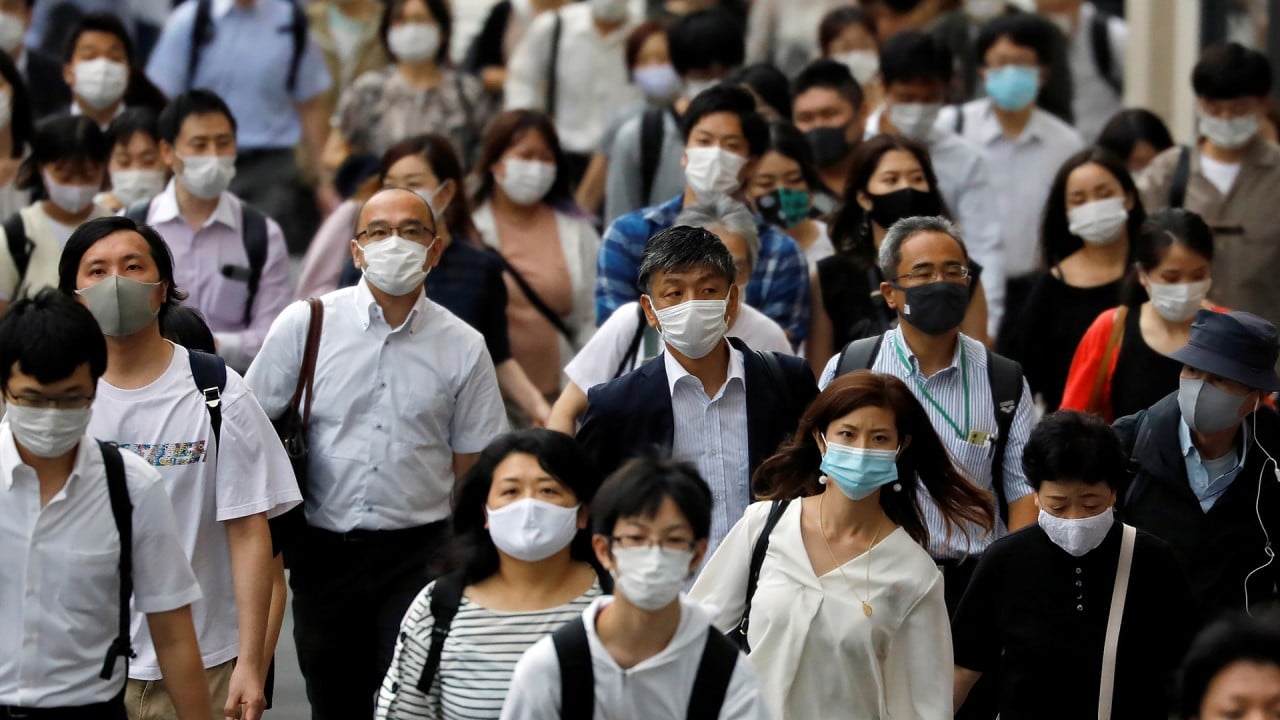
07:54
Six months after WHO declared Covid-19 a public health emergency, what more do we know now?

China’s recovery from the coronavirus pandemic continued in July, but analysts have cautioned that the nature of the rebound represents a step back in time, with the economy once more reliant on heavy industry, infrastructure projects, debt, investment and low-end exports.
Sentiment reflected in the official purchasing managers’ index (PMI) for July, released on Friday by the National Bureau of Statistics, pointed to a fifth successive month of growth in manufacturing, services and construction.
The rebound was powered by a revival in export orders, as well as building projects, with other indicators also suggesting China has returned to its old playbook of building and exporting its way out of the crisis. State funded investment in China is at a 10-year high.
That the Chinese figures come as the economies of the United States and Europe are gripped by severe downturns reflects the fact that China was the first in and first out of the pandemic – despite relatively minor outbreaks continuing to pop up around the mainland.

07:54
Six months after WHO declared Covid-19 a public health emergency, what more do we know now?
The Eurozone economy – roughly 85 per cent of total European Union gross domestic product (GDP) – shrank by 15 per cent in the second quarter compared to a year earlier, new data on Friday showed, while US GDP contracted by a record annualised rate of 32.9 per cent over the same period, essentially wiping out five years of American economic growth, even as cases of coronavirus continue to pile up.
These figures are worse than China’s official 6.8 per cent contraction in the first quarter. While not directly comparable, as the Chinese data compares the first quarter this year with the same period a year earlier, and the US number is an annualisation of the change in the second quarter compared to the first, the US contraction is larger.
It also points to the fact that China’s authoritarian governance model enables it to stimulate or lock down whichever areas of the economy it needs to, unlike economies in the West, analysts said.
“To me there is no surprise: China compared to other countries has more levers to increase GDP by increasing investment or by stocking up on inventories of coal or iron ore, or other upstream materials. They can keep doing this for another two or three quarters,” said Heiwai Tang, professor of economics at the University of Hong Kong
“They are basically going back to the investment-driven growth model, and this might be the right thing to do for now given the external environment is so weak and geopolitical tension has increased.”
China’s approach to these geopolitical tensions – officially dubbed “dual circulation” – will see it look to be self-sufficient in key sectors while de-emphasising the external economy.
China will attempt to rely largely on its domestic market, although many economists and analysts doubt whether Beijing has the capability to conduct the deep-rooted structural reforms needed to achieve the goal.
“There is a clear trend of China looking inward,” said Bo Zhuang, chief China analyst at TS Lombard. “I would go one step further to call it a beginning of self-isolation. But it’s hard to know whether this is a temporary posture of laying low before the American presidential election in November or it’s indeed a long-term policy.”
Record shipments of iron ore, soaring imports of coal, and steel mills going into overdrive suggest another investment boom is under way, which was also reflected in a surge in construction sentiment in Friday’s PMI data.
Low-end exports have also powered growth in the absence of competition, with rival exporters suffering from the effects of the pandemic. But this jolt may be fading, analysts warned.
“The pandemic turned worse again in many parts of the world, including the US, resulting in slower recovery than had been expected,” said Lu Ting, chief China economist at investment firm Nomura.
“Pent-up demand is likely to weaken, sporadic and moderate outbreaks of Covid-19 in China may restrain the pace of recovery in the services sector, the surge in exports of medical products and telecommuting-related devices is likely to fade, and rising US-China tensions could hit China’s exports and related manufacturing investment.”
All the while, local governments have been gorging on cheap credit – highlighted by the accumulation of 40 billion yuan (US$5.7 billion) of debt in the county of Dushan, around 40 times its annual fiscal revenue.
The pressure is on China’s policymakers to balance the dual circulation policy with continuing economic momentum over the next six months. Analysts are doubtful whether the old playbook can keep things ticking along forever.
“China’s recovery looks strong on the surface but it is unbalanced and reliant on stimulus spending. China’s consumers must start spending again if this recovery is to achieve a self-sustained lift-off later this year,” said Shaun Roache, chief Asia-Pacific economist at S&P Global.
“With demand in China’s largest trading partners at risk of sputtering, the importance of China’s consumers as the driver of growth has become even more important.”